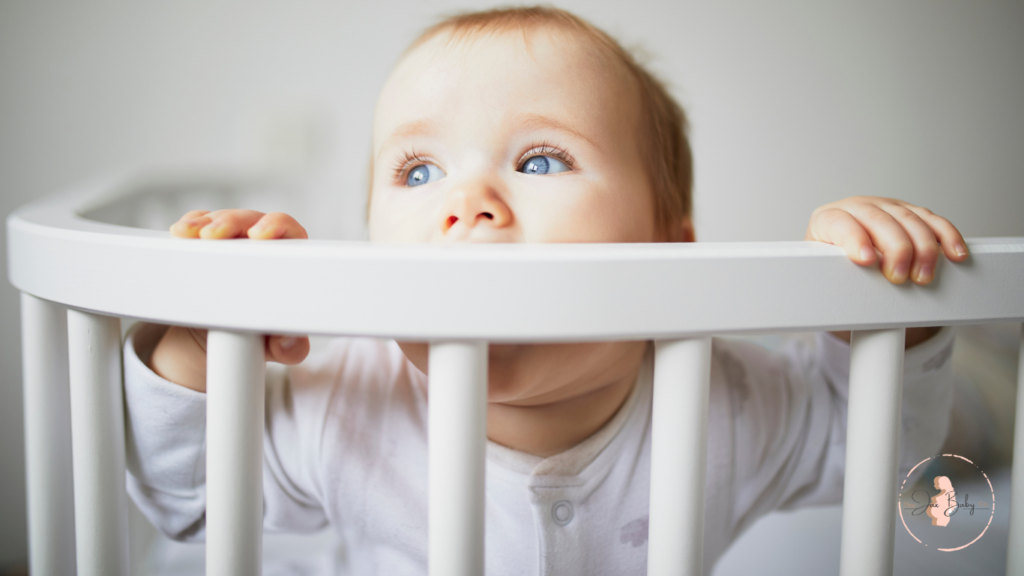
The Easiest Way to Keep Your Baby Safe While Asleep
The easiest way to keep your sleeping baby safe is to know when the right time is to lower their crib mattress, and to do it! Ultimately, as their parent, their safety is your top priority. Ensuring your baby’s safety is our priority too! One aspect of creating a safe sleep environment for your infant is adjusting the crib mattress height. The height of the crib mattress should be adjusted as your baby grows to prevent them from climbing, or more importantly falling out of the crib. But when is the right time to lower the crib mattress? This guide will help you along the way,
Why is Lowering the Crib Mattress Important?
The crib mattress serves as the foundation of your baby’s sleep space. When you have a newborn, it is easiest on everyone to have the crib mattress set at the highest level. It minimizes the risk of back strain and is just easier on tired caregivers. This is especially important for those who have had a difficult birth, those who are recovering from a cesarean, and for caregivers who may have a “bad” back. However, as your baby grows and becomes more mobile, lowering the crib mattress becomes necessary to ensure their safety. Luckily for you, it’s the easiest way to keep your sleeping baby safe.
Babies start rolling, sitting up, and eventually standing on their own. Babies practice new learned skills a lot when they sleep! Falling from the crib can result in serious injuries such as fractures, bruises, or head trauma. Lowering the crib mattress at the right time helps to prevent your baby from climbing over the crib rails or accidentally falling out, reducing the risk of injuries.
When to Lower the Crib Mattress?
The right time to lower the crib mattress depends on your baby’s development and milestones. Here are some guidelines to help you determine when it’s time to make the adjustment:
Rolling Over
Once your baby starts rolling over consistently, it’s time to lower the crib mattress to the middle setting, or to the lowest setting if you don’t have a mid-setting. Nearly all cribs in use today have three settings. Rolling over is a sign that your baby is developing strength and mobility, and they may be able to use this skill to push up and potentially fall from their crib. For some parents staying at the highest setting, taking it day-by-day, and reevaluating when to lower it will be the right choice. However, as a professional who has worked with infants overnight for over a decade, I can confidently say go ahead and plan to just lower it to the middle setting (or lowest if there isn’t a middle setting) by the time your baby is 4 months old or if your baby has begun rolling over, whichever comes first.
This is also the perfect time to stop swaddling your baby per the American Academy of Pediatrics, as it is no longer considered safe.
Check out this blog on the Magic of Swaddling!
Sitting Up, Crawling, and Pulling Up to Stand
When your baby starts getting up on their hands and knees, is commando crawling (using their arms to drag the lower half of their body), or sitting up unassisted, it’s an indication that they are becoming more mobile and may try to pull themselves up on the crib rails. Lower the crib mattress to its lowest level now to prevent falls.
The easiest way to keep your sleeping baby safe is to lower that mattress before you know for sure you need to!
It’s important to note that babies develop at different rates, and while these guidelines are generally applicable, your baby may hit these milestones earlier or later than other babies. Always observe your baby’s movements and behavior to determine the right time to lower the crib mattress.
Knowing when to lower your infant’s crib mattress is half the battle! The other moving parts are setting a plan to do it and executing it! I always suggest setting reminders on your calendar for months 3 & 4 to lower the mattress & stop swaddling!
I hope this guide helps you and your baby have many more happy years together!
Happy Birth & Parenting,
Elizabeth